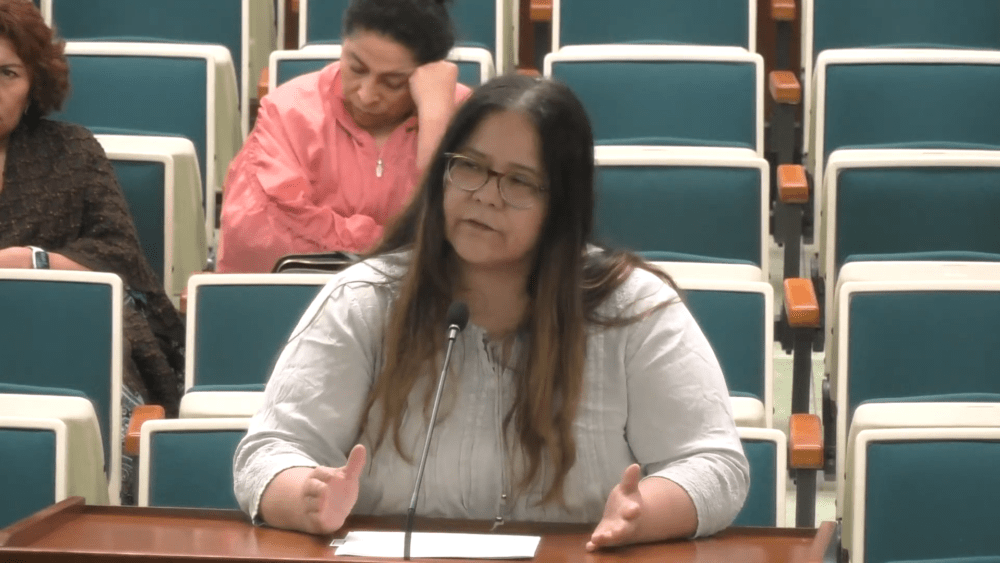Get the latest news: Subscribe Now
In the eternal struggle against such basic human banes as homelessness, housing and food insecurity, and basic resource accessibility, Springfield has many public and private institutions fighting what might be called, “the good fight,” to better the lives of those who need assistance across the community.
WMAY has recently interviewed the Heartland Continuum of Care’s Director Josh Sabo, its Community Housing Navigator Nick Dodson, Catholic Charities Springfield Area Director Patrick McConnell, as well as the folks that run the everyday operations of the St. Martin de Porres Food Pantry; we’ve even published an analysis concerning the long term costs of homelessness across society!
We have simply learned so many things during our sit-down sessions with those folks who work each day to ensure that people across the community who are struggling in some predicament or hard moment might not have to struggle so badly forever – and the education continued just the other day!
When, only a few days ago, WMAY got to speak with the Executive Director of the Helping Hands of Springfield – a “private not-for-profit organization that provides homeless services to single adults 18 and older,” as it states on the website – we got more of the same type of information and education; the conversation we enjoyed with the executive director was thoughtful and detailed; specific, yet expansive as well.
We felt that it was so interesting and important, in fact, that it could not be contained within just one piece. Enjoy part one below – part two will be out just in time for you to enjoy with a Saturday cup of coffee or tea!
In part one, however, we got to discuss a bit about the executive director’s life to this point, the history, present, and a bit of the future of the Helping Hands of Springfield, the suffering that the homeless bear, the Heartland Continuum of Care, the shared work that both organizations are putting into our community to make it a healthier, more equitable place to live for all, and the concept of human necessities like food and shelter as utility items!
WMAY: Thank you for taking the time to speak with me and have me visit today; before we begin speaking as it concerns Helping Hands of Springfield, the work that you all have done already and are looking to continue, as well as any and all other related topics, would you tell me a bit about yourself and your own background and what brought you to this point in your personal and professional life?
LD: It’s funny when you look back on your experiences and all of the disjointed events come together in a way that makes sense. I am an Air Force brat, and grew up on a military base in Southern California surrounded by people from all over the world. Some of my earliest memories include meeting a very eclectic variety of people traveling by Greyhound between California and Illinois. I think the early exposure to so many different cultures has given me a level of comfort working with people from different backgrounds.
I’m a caretaker by nature (probably to a fault), but it didn’t occur to me to seek a career in human services until I was an adult. I intended to attend medical school, but life looks a lot different as an adult than it does in high school. I ended up moving to Northern Michigan and attaining a degree in accounting while caring for my two young children.
Though my degree is in accounting, I took a job working in a crisis home for adults with SMI, and loved it. When I later moved back to Illinois, I connected with Erica Smith (the former ED of Helping Hands) in a grant writing class. She offered me a position as a shelter case manager. Five years later, I’ve worked in every program at Helping Hands and am now the ED. I love the culture at Helping Hands and am fortunate to work with a group of people who bring their passion and dedication to work every day.
WMAY: Now, with that done and sorted, please tell me if you could about the Helping Hands of Springfield, a bit of its history, how you work with Nick Dodson and the folks from the Heartland Continuum, and how you all look to positively impact the most vulnerable of the community each day?
LD: Helping Hands has historically been known as the “men’s shelter” here in Springfield. We got our start back in 1989, and over the years we have added a variety of housing and supportive service programs to better meet the needs of our clients. We now offer an emergency and transitional men’s shelter for 56 men experiencing homelessness in our community, representative payee services for approximately 125 individuals, a rapid rehousing program, and two permanent supportive housing projects. After a break during the pandemic, we are once again offering a drop-in center with access to basic case management and access to basic needs.
In the near future, we will be operating a permanent supportive housing project on Park Street and moving our overall operations to a new facility in the Sangamon County Complex on Dirksen. With this move, we will absorb the Springfield Overflow Shelter, which will expand our available shelter beds to 140 men and women, and better integrate our housing programs and supportive services to quickly move people into permanent housing with appropriate supports.
I am so excited about the work we are doing to come together and work collaboratively in the community. The Heartland Continuum has made great strides in identifying overlaps and gaps in services and are working to improve our overall efficiency and cross-sector communication. As we better coordinate our efforts and identify those individuals who have historically fallen through the gaps, we improve our ability to prioritize the needs of the most vulnerable.
Nick has really been a game changer for the continuum, as he has improved our relationships with area landlords and found new housing opportunities for people. He’s also able to shorten the housing wait times for people who don’t necessarily need the support of a housing program, but would otherwise struggle to navigate the housing options in Sangamon County.
WMAY: The homeless suffer disproportionate burdens as it concerns shelter, food, water, and accessibility to all sorts of other necessities that so many of us take for granted on a daily basis; do you feel that those who can be considered housing insecure receive less attention even than homelessness? Is this additional housing issue ignored, to any degree, because those insecure with housing often do not appear “homeless” as they surf couches and other shelters just the same as their counterparts who suffer upon the street almost exclusively?
LD: Housing insecurity is a huge problem in our society, and does often go unnoticed. We struggle to meet their needs at the organizational level due to funding restrictions on governmental grants. Our housing programs, for instance, cannot serve people that are not literally homeless by HUD’s definition. When we do encounter people that are living in places like motels, couch surfing, etc., we try to connect them with resources in the community, but it is a struggle.
The other issue is simply capacity. If we cannot currently meet the needs of those who are unhoused and unsheltered, how can we begin to prioritize those who are in a saf(er), if unstable, situation? Unfortunately, with the economic downturn, post-covid funding decreases, and inflated costs associated with housing, food, and basic needs, I foresee an increase in home instability rather than a solution.
WMAY: Springfield, in my estimation, having done some work concerning the homeless and housing insecure, seems the perfect next place to attempt to bring homelessness to “functional zero,” precisely because of its size and population; what do you think of this ambition and the tools that are being cultivated and utilized to make it so? Furthermore, are you confident that the safety nets that public-private partnerships and cooperation hope to strengthen can create a real blueprint that communities both smaller and larger than Springfield will be more confident to attempt to emulate themselves?
LD: While reaching functional zero in the next five years is a hugely ambitious goal, I am confident that we have the ability in Sangamon County to do so. Our community is rich in resources, but we have to streamline the process by creating community standards for prioritizing these resources and improving our interagency and cross-sector communication and referral methods.
In the past, it was necessary for social services to act as silos. We carved out niches regarding our identified clientele, competed for limited resources, and focused on our agencies’ priorities alone. As the population has changed and our clients are coming to us with more complex, overlapping needs, we are now in a position where we have to work collaboratively to meet those needs.
Shelters are not equipped to meet the medical and behavioral health needs of our clients, yet addressing those needs are vital to the safety and wellbeing of everyone utilizing those services. Medical providers cannot adequately meet the needs of unhoused individuals due to the inherent transient nature of life on the streets. By bringing these different sectors together to discuss how we can best meet the needs of our shared populations, we improve outcomes not only for the individuals we serve, but for the providers trying to show their programs deserve continued funding.
Of course, our efforts will be wasted if we don’t work to engage those who would utilize our services. We must work to build the trust of those unhoused neighbors who have lost faith in a system that has repeatedly failed them. We have to meet people where they are, extend our outreach efforts, and provide a consistently safe, trauma-informed environment for people to heal.
If we can continue to strengthen these relationships, find a way to safely share data, and coordinate our efforts as outlined in the Heartland Housed strategic plan, I really believe we can create the housing and supports necessary to reach functional zero.
WMAY: “Food as a utility” has become a growing idea and movement across the country, as the amount of food available is unevenly distributed across communities across the country–not even considering the world for the sake of this question. Why not shelter too? Would these innovations, in your estimation, help those who find themselves seeking assistance from public and private groups such as yourself? How do you see it?
LD: I am an ardent supporter of Housing First and the idea that safe housing should be a basic human right. Low-barrier emergency shelter is expensive and inefficient and should be a short-term stopgap measure while new housing is identified, and should be available to all who need it.
The reality is somewhat more complicated. Housing availability, especially for those historically marginalized, is not consistent. Unhoused people entering the shelter system often have barriers that keep them from accessing housing, and may be unable to maintain housing without appropriate support. Some individuals have needs that surpass the ability of emergency shelter staff to meet safely, especially in a congregate setting.
Helping Hands, in conjunction with the other agencies in the Heartland Continuum, are working to adapt our practices to meet the realities of what we’re experiencing. As we develop more housing opportunities, we have to train our staff to better assess housing barriers and find innovative ways to address them, which in turn should help people.
Our thanks to Executive Director Davis, the Helping Hands of Springfield, and all of their staff for their time and consideration.





